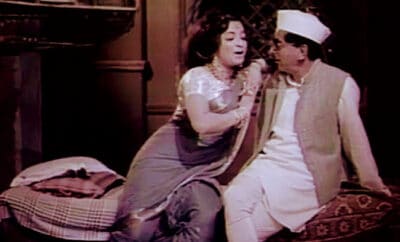Legends
V. Shantaram – The Progressive Philosopher
Far ahead of his times but constantly revamping himself, V.Shantaram was a pioneer of not only Hindi films but the Indian film industry itself, seeing its journey from silent to “talkies”, from black and white to colour, from depicting mythology and historical episodes to reflecting the immense diversity of contemporary life and society and the infinite spectrum of the human fancy. Films are a powerful medium for social transformation and no one realised it better than V. Shantaram. Some of his memorable creations include evils like untouchability and caste, forced marriages of young women to moneyed old men, dowry, communalism and regionalism, to humanise policemen, prostitutes and convicts.
Shantaram Rajaram Vankudre referred to as V.Shantaram, was born on 18 November 1901 in the erstwhile princely state of Kolhapur (Maharashtra) into a Maharashtrian Jain family. He was fondly known as “Annasaheb”. Barely having any education Shantaram did some odd jobs like working in the railways. He started his career in theatre as a curtain puller with “Gandharva Natak Mandali”. He eventually directed his first film in 1927, “Netaji Palkar”. He made “Ayodhyecha Raja” in 1932, on the life of Raja Harischandra, as a mark of respect to Dadasaheb Phalke, whose first film was made on the same subject. His next venture “Agnikankan” was released in Marathi as well as Hindi while “Amrit Manthan” beautifully depicted the tensions between Buddhism and different established sects and “Dharmatma” depicted Saint Eknath’s preachings against untouchability. “Sant Tukaram” (1936) stood apart from all these films for its simplicity. It was awarded at the Venice Film Festival(1937) and was the first Indian film to be honoured in those days.
“Manoos” (1939) turned out to be a significant one in its theme- a love story between a police constable and a prostitute and also for its artistic integrity, work of art and representation of characters. It was released in Hindi as “Aadmi” and till date is considered as one of his finest works. Shantaram founded Rajkamal Kalamandir in 1942 after parting ways with his partners. His remarkably patriotic film under this banner was “Dr. Kotnis ki amar kahani” which is a real life story of Dr. Dwarkanath Kotnis during World War II. Movies like Jhanak Jhanak Payal Baje, Navrang, Sehra, Jal Bin Machhli Nritya Bin Bijli were connected to dance and are considered musical extravaganzas. “Do Aankhein Barah Haath” is considered one of the classics of Hindi cinema and is based on human psychology.
Shantaram’s association with the film industry for over half a century has been phenomenal. His contribution to the progress and promotion of the industry makes him a keystone of Indian Cinema in its formative years.


Ajay
November 18, 2017 at 8:09 pm
Thanks for elaborating the great artist like V Shantaram. If someone watches “Sant Tukaram” (1936) , produced by V Shantaram, in Marathi he will know that V Shantaram was way ahead of its time. He introduced many photographic techniques through “Sant Tukaram”. He has a vast sense of music, Even “Sant Tukaram” has good music scored by Keshavrao Bhole. It was not an easy task for any music directors to satisfied him. V Shataram had selected ‘names’ of music directors. Music directors like Vasant Desai and C Ramchandra have scored outstanding music for many of V Shantaram. films. Other music directors like Ramlal, Satish Bhatiya, Ram Kadam and Laxmikant-Pyarelal (Jal Bin Machhali Nritya Bin Bijli) have also given excellent music for V Shantaram films. Through “Jal Bin Machhali Nritya Bin Bijli” music, V Shantaram introduced stereophonic recording for film songs.